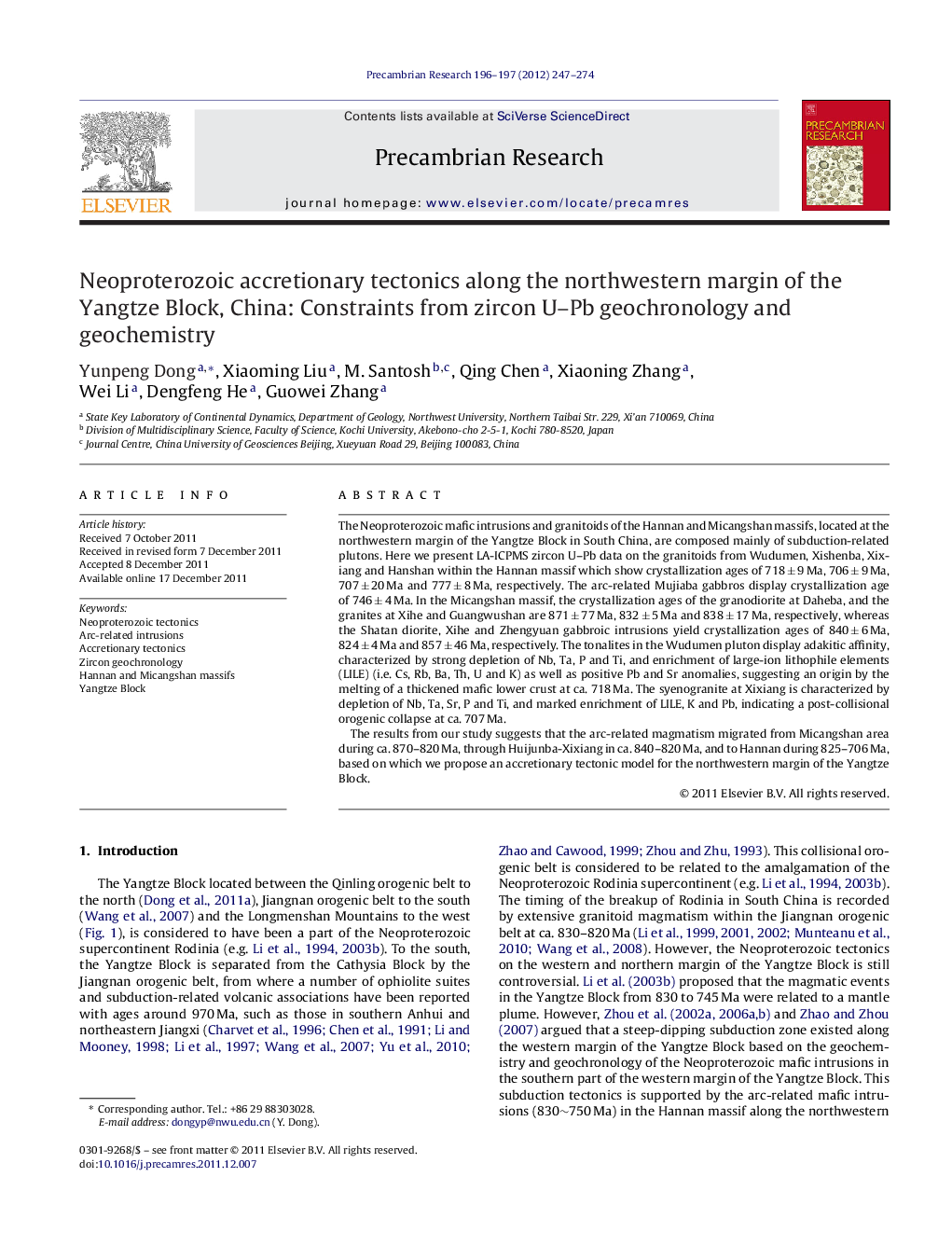| Article ID | Journal | Published Year | Pages | File Type |
|---|---|---|---|---|
| 4723608 | Precambrian Research | 2012 | 28 Pages |
The Neoproterozoic mafic intrusions and granitoids of the Hannan and Micangshan massifs, located at the northwestern margin of the Yangtze Block in South China, are composed mainly of subduction-related plutons. Here we present LA-ICPMS zircon U–Pb data on the granitoids from Wudumen, Xishenba, Xixiang and Hanshan within the Hannan massif which show crystallization ages of 718 ± 9 Ma, 706 ± 9 Ma, 707 ± 20 Ma and 777 ± 8 Ma, respectively. The arc-related Mujiaba gabbros display crystallization age of 746 ± 4 Ma. In the Micangshan massif, the crystallization ages of the granodiorite at Daheba, and the granites at Xihe and Guangwushan are 871 ± 77 Ma, 832 ± 5 Ma and 838 ± 17 Ma, respectively, whereas the Shatan diorite, Xihe and Zhengyuan gabbroic intrusions yield crystallization ages of 840 ± 6 Ma, 824 ± 4 Ma and 857 ± 46 Ma, respectively. The tonalites in the Wudumen pluton display adakitic affinity, characterized by strong depletion of Nb, Ta, P and Ti, and enrichment of large-ion lithophile elements (LILE) (i.e. Cs, Rb, Ba, Th, U and K) as well as positive Pb and Sr anomalies, suggesting an origin by the melting of a thickened mafic lower crust at ca. 718 Ma. The syenogranite at Xixiang is characterized by depletion of Nb, Ta, Sr, P and Ti, and marked enrichment of LILE, K and Pb, indicating a post-collisional orogenic collapse at ca. 707 Ma.The results from our study suggests that the arc-related magmatism migrated from Micangshan area during ca. 870–820 Ma, through Huijunba-Xixiang in ca. 840–820 Ma, and to Hannan during 825–706 Ma, based on which we propose an accretionary tectonic model for the northwestern margin of the Yangtze Block.
Graphical abstractFigure optionsDownload full-size imageDownload as PowerPoint slideHighlights► Southward subduction of oceanic crust formed the Micangshan-arc during 870–830 Ma. ► Rolling back of subducted oceanic crust generated new Hannan-arc during 824–750 Ma. ► Crust thickening occurred at ca. 718 Ma, and followed by orogen collapse at 706 Ma.
